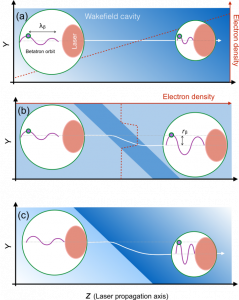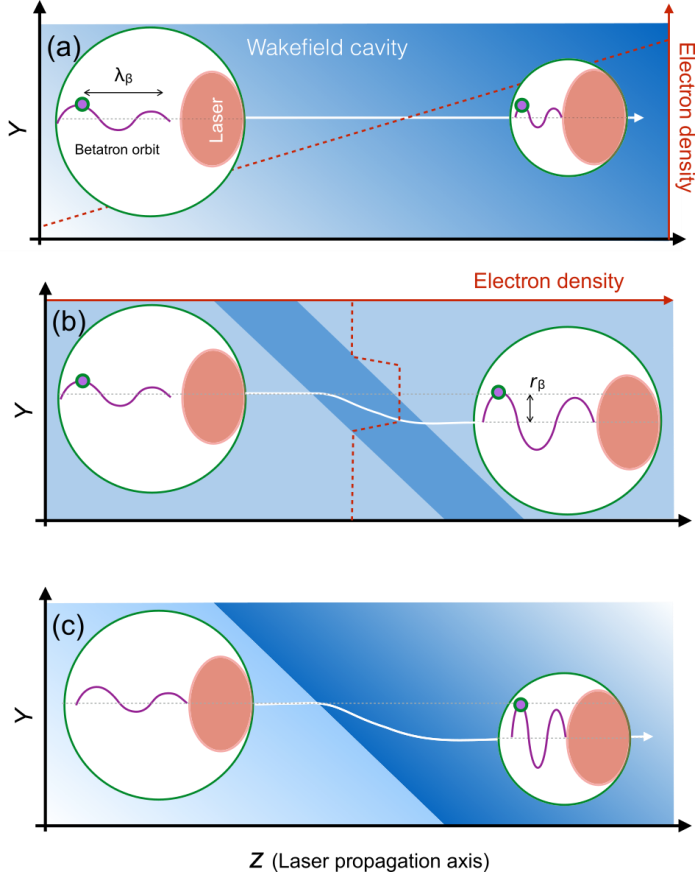Strongly boosted energy and flux of LOA’s betatron x-ray source
Betatron x-ray sources from laser-plasma accelerators reproduce the principle of a synchrotron at the millimeter scale. X-rays are produced by electrons accelerated to relativistic velocities and oscillating in the wake of an intense laser pulse propagating in a gas, usually helium.
In addition to being compact, these sources have both femtosecond pulse duration and a broad spectrum. However, despite these unique properties, the flux and energy of these sources, when produced with Terawatt lasers, remain too low compared to synchrotron sources. This considerably limits their field of application.
In an article recently published in the journal Physical Review X, we demonstrate a new simple method that increases the efficiency of the source. We show that density modulations in the gas let us manipulate the trajectories of relativistic electrons. We have thus been able to optimize the production of X-rays and increase the energy of the source by an order of magnitude. The energy of the Betatron source at LOA now exceeds 10 keV. This makes it a particularly interesting tool for studies of ultrafast atomic and molecular dynamic
[1] « Hard X Rays from Laser-Wakefield Accelerators in Density Tailored Plasmas » ; M. Kozlova, I. Andriyash, J. Gautier, S. Sebban, S. Smartsev, N. Jourdain, U. Chulagain, Y. Azamoum, A. Tafzi, J.-P. Goddet, K. Oubrerie, C. Thaury, A. Rousse, and K. Ta Phuoc, Phys. Rev. X 10, 011061 (2020).




